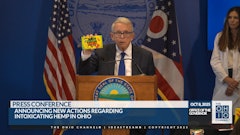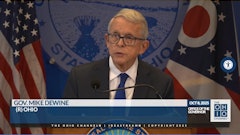
U.S. Congress members returned to Washington, D.C., last month, with two major legislative issues on the table: The spending bill, which needed to avert the semi-regular threat of a government shutdown, and President Joe Biden’s infrastructure bill, a first-year touchstone clocking in at $1 trillion.
The spending bill presents its own time-worn tension for legislators on both sides of the aisle. But it’s the infrastructure bill that caught the attention of the hemp industry.
While the U.S. Senate passed the bill as-is, the House has proven a mighty obstacle. The bill has been mired in political infighting over the cost—and the reputational consequences for Biden. On Sept. 30, House Speaker Nancy Pelosi delayed the vote with a promise to renew debate Oct. 1. What happens next is unclear.
But as the debate has raged on, the National Hemp Association and several other organizations put in a request for a $1-billion amendment to the bill—$1 billion in extra funding that would go to the hemp industry.
“As you consider the budget reconciliation for our nation, we sincerely ask that you consider hemp,” the signatories wrote. “Our industry is nascent but can achieve the greatness of other agricultural crops, and perhaps more still, given parallel levels of support to create infrastructure and develop markets. With adequate, specifically applied resources farmers shall possess a level playing field to move the hemp industry to the next level.”
Read the full letter below.
The biggest portion of that request would fund four “regional super sites” to the tune of $100 million each. These sites—Oregon, Michigan, New York and Florida—were selected for their relatively distinct geography and their proximity to industries that may very well benefit from the industrial hemp supply chain in the future. Geoff Whaling, chair of the National Hemp Association, pointed to Michigan’s automotive industry as a perfect example of impending harmony with hemp.
As international shipping costs continue to rise—and as research into hemp fiber continues to find new, innovative possibilities—the need for a domestic supply chain is becoming crystal-clear, he said. Businesses are inquiring as to the availability of hemp materials, and Whaling insisted that public-private partnerships are needed—and fast. Investment will breed scale, and scale is what will deliver hemp fiber into the future of the American commercial landscape, he said.
“We have no infrastructure in the United States,” Whaling said. “Certainly we have a lot of entrepreneurial stories, but if you look at companies like Fish Enterprises, which is by far advancing decortication, they are providing a small solution.
He pointed to IND Hemp’s $25-million commercial-scale decortication facility in Montana, for which ground was broken in August. It’s a major undertaking, but Whaling pointed out as an example that its planned capacity can handle 16,000 acres of hemp per year—quite short of the scale needed to engage with an automotive giant like, say, Ford. A safer estimate for a business contract like that is closer to “100,000, 200,000, upwards of 1 million acres,” Whaling said.
To get there, a lot of investment is needed. A lot of land is needed.
“By looking at creating these so-called super sites, it will allow us to really start to research how to scale this industry, which is really starting from scratch,” he said. “Although it’s frustrating and challenging at times, it is very exciting to say, ‘This must be what it was like years ago when the movers of the steel industry were starting to build it out.’”
Much of the remaining $600 million in NHA’s request, in theory, would fund farmers directly. The qualifications placed on that large sum of money are numerous, but the NHA’s letter focuses on “registered farms qualifying under the historically underserved funding programs of the [National Resources Conservation Service]” and farmers in jurisdictions “in their first year of production.” Furthermore, some of that money would help fund educational programs run by state departments of agriculture or tribal governments.
Whether this comes to pass remains to be seen.
National Hemp Association Infrastructure Funding by sandydocs on Scribd


























